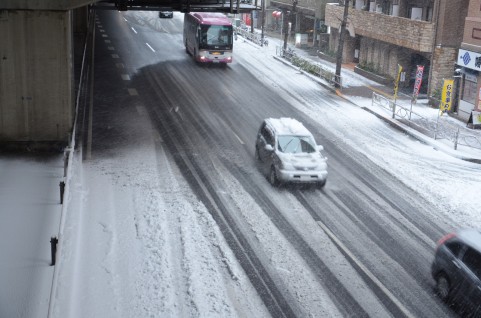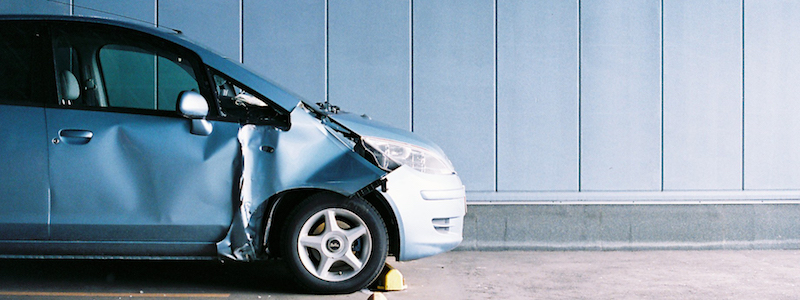- Try to keep the scene as it happened.
- Rescue anyone who is injured.
- Call “119” (Ambulance) if there is anyone injured.
- Call “110” (Police) and explain the location and situation.
- Move the vehicle if it gets in the way of traffic. When doing so, be sure to mark where the vehicle had been before removal. If you have a camera with you, take a picture of the scene before you move your car.
- Follow the instructions when the police arrive.
- Call your insurance company (keep their contact information in your car at all times).
If you have a camera with you, take a picture of the scene before you move your car. Also, it may be helpful to keep the contact information of your insurance company with you at all times.
See also: Map of Traffic Accidents (Japanese Only, updated in real time )Tokyo Traffic Accident Map
Snow Conditions in Japan
 When driving in Japan in the winter, remember to be aware of the road conditions. Japan’s landlocked interior and Northern regions, along with the Western coastline, receive abundant amounts of snowfall from November to as late as May. As these areas enter the snowy season, thick snowfall can continue for days at a time, and road surfaces freeze over. Due to these conditions, it often becomes necessary to change your tires to studless snow tires or put on chains. Tokyo also has icy road conditions and snowfall a few days of the year, so it is recommended to change your tires before winter. Some dealers may offer to hold on to your regular tires until it’s time to change them back in the spring. Those with chains should practice using them before the first snowfall of the year.
See also:
our featured article: “Things to Know about Winter Driving in Japan ”.
When driving in Japan in the winter, remember to be aware of the road conditions. Japan’s landlocked interior and Northern regions, along with the Western coastline, receive abundant amounts of snowfall from November to as late as May. As these areas enter the snowy season, thick snowfall can continue for days at a time, and road surfaces freeze over. Due to these conditions, it often becomes necessary to change your tires to studless snow tires or put on chains. Tokyo also has icy road conditions and snowfall a few days of the year, so it is recommended to change your tires before winter. Some dealers may offer to hold on to your regular tires until it’s time to change them back in the spring. Those with chains should practice using them before the first snowfall of the year.
See also:
our featured article: “Things to Know about Winter Driving in Japan ”.